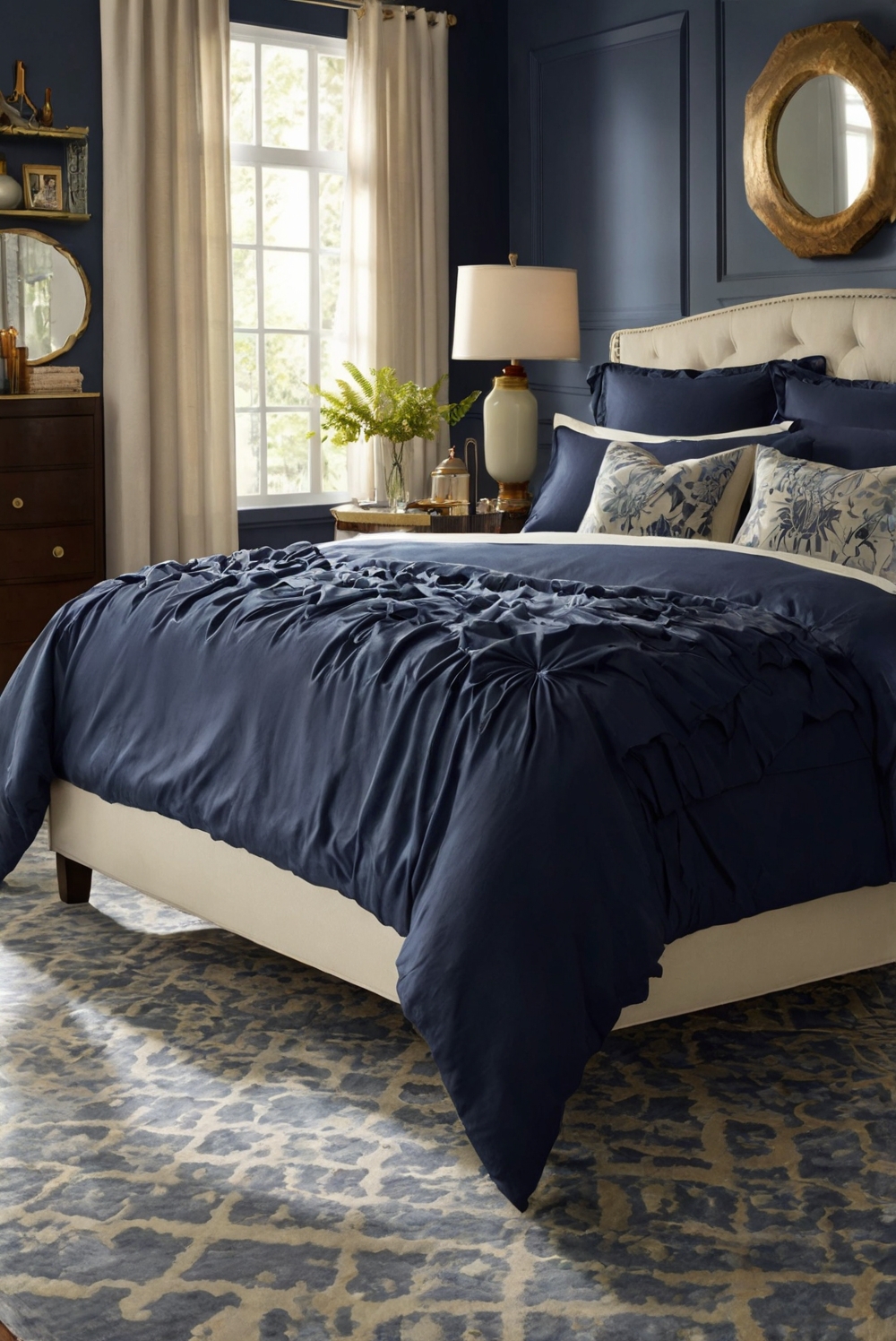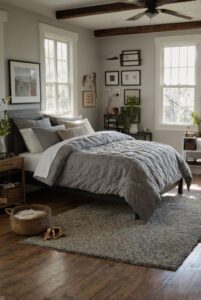Looking to make your bedroom more eco-friendly? Explore quality bedding options that are both sustainable and stylish.
Considerations for choosing eco-friendly bedding materials include materials such as organic cotton, bamboo, linen, and hemp. These materials are sustainable, free from harmful chemicals, and biodegradable. When selecting eco-friendly bedding, look for certifications like Global Organic Textile Standard (GOTS) or OEKO-TEX to ensure the product meets strict environmental and social criteria. Additionally, opt for bedding that is responsibly sourced and ethically made to support fair trade practices. By choosing eco-friendly bedding materials, you contribute to a healthier environment and promote sustainable living practices in your home décor and interior design. Make sure to prioritize eco-conscious decisions when decorating interiors to create a beautiful living space while also being mindful of the impact on the environment.
Considerations for choosing eco-friendly bedding materials:
1. Opt for organic cotton, bamboo, linen, or hemp
2. Look for certifications like GOTS or OEKO-TEX
3. Choose responsibly sourced and ethically made products
4. Support fair trade practices
5. Create a beautiful living space while being mindful of the environment
6. Prioritize eco-conscious decisions for a healthier home interior
By following these considerations, you can enhance your home decor with eco-friendly bedding materials while contributing to a sustainable environment.
Considerations for Choosing Eco-Friendly Bedding Materials
When selecting bedding materials, it’s essential to consider their environmental impact. Eco-friendly bedding materials can help reduce your carbon footprint and promote sustainability. Here are some key considerations:
Natural Fibers
Opt for bedding made from natural fibers such as organic cotton, linen, or bamboo. These materials are sustainable, biodegradable, and free from harmful chemicals. Organic cotton, in particular, is grown without synthetic pesticides or fertilizers, making it a more eco-friendly choice.
Chemical-Free
Look for bedding that is certified chemical-free to avoid exposure to toxic substances. Organic certifications such as GOTS (Global Organic Textile Standard) ensure that the bedding has been produced without harmful chemicals. This is not only better for the environment but also for your health.
Durability
Choose bedding materials that are durable and long-lasting. High-quality eco-friendly bedding may have a higher upfront cost, but it will last longer, reducing the need for frequent replacements. This not only saves you money in the long run but also reduces waste.
Investing in Eco-Friendly Bedding
When considering eco-friendly bedding materials, it’s important to prioritize sustainability, health, and quality. By opting for natural fibers, chemical-free options, and durable materials, you can make a positive impact on the environment while enjoying a comfortable and eco-conscious sleep experience.
1. Why is it important to consider eco-friendly bedding materials?
Choosing eco-friendly bedding materials is crucial for reducing environmental impact. Conventional bedding materials often contain harmful chemicals that can be harmful to both our health and the environment. By opting for eco-friendly materials, such as organic cotton, bamboo, or Tencel, you can help minimize the use of pesticides, synthetic dyes, and other harmful substances. This not only promotes a healthier sleeping environment but also supports sustainable practices in the textile industry.
2. How can you determine if bedding materials are truly eco-friendly?
To ensure that the bedding materials you are considering are eco-friendly, look for certifications such as Global Organic Textile Standard (GOTS) or OEKO-TEX Standard 100. These certifications guarantee that the materials have been produced using environmentally friendly practices and do not contain harmful substances. Additionally, consider the manufacturing process, transportation impact, and overall lifespan of the bedding to make a more informed decision.
3. What are some popular eco-friendly bedding materials?
Some popular eco-friendly bedding materials include organic cotton, bamboo, Tencel, hemp, and linen. These materials are grown and processed using sustainable practices, such as organic farming and water-saving techniques. They are also biodegradable and have a lower environmental impact compared to conventional bedding materials. Each material has its unique qualities, such as breathability, moisture-wicking properties, and durability, making them suitable for different preferences and needs.
4. Are there any specific considerations for people with allergies or sensitivities?
For individuals with allergies or sensitivities, choosing eco-friendly bedding materials is especially important. Materials like organic cotton, bamboo, and Tencel are hypoallergenic and naturally resistant to dust mites and mold, making them ideal choices for allergy sufferers. Additionally, avoiding synthetic materials and harsh chemicals can help reduce the risk of skin irritation or respiratory issues. Be sure to check for certifications and labels that indicate the bedding is free from harmful substances.
5. How can you make your bedding more sustainable?
To make your bedding more sustainable, consider investing in high-quality products that are designed to last longer. Opt for timeless designs and neutral colors that can be easily mixed and matched, reducing the need for frequent replacements. Wash your bedding in cold water and line dry whenever possible to save energy and prolong its lifespan. Finally, consider donating or recycling old bedding to minimize waste and support a circular economy. By making small changes in your bedding choices and care routine, you can contribute to a more eco-friendly lifestyle.




